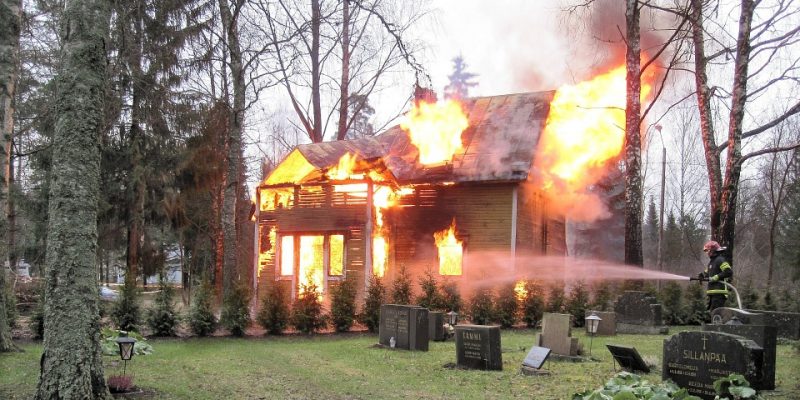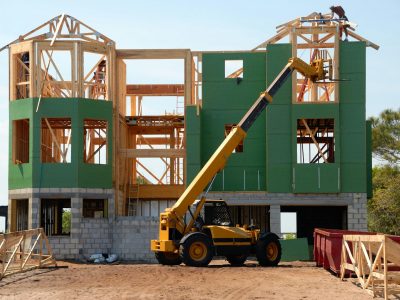It’s horrible to have a fire in your house. You are happy that everyone is safe, but now you have the daunting task of putting everything back together. From a burned roof, fire-damaged interiors to water-soaked carpeting, it’s difficult to know where to begin. The task of restoring your home might be physically difficult, messy, and emotionally draining, but it’s possible and worth the satisfaction of restoring your home. There are so many things to consider, such as is there anything you need to do to get insurance? Is the area safe now since the fire has been put out? Will you be able to reclaim any of your possessions once the repair is completed?
A house fire takes time to recover from, but you don’t have to do it alone. Many of the tasks must be performed by licensed specialists, so you can rely on strong assistance as you go through these five steps.
1. Contact Your Insurance Company
The first step in restoring a home after a fire is to contact your insurance agent. It’s vital to get started on your claim as soon as possible. Discuss bringing in a professional fire restoration contractor with your agency. Your insurance agent should therefore be familiar with dealing with property problems and guide you through things like emergency accommodation and living arrangements. It is critical to learn more about fire restoration experts that can help with fire and smoke damage restoration.
To handle the fire damage cleanup, the restoration businesses will directly interact with your insurance carrier. Lastly, determine who will pay for various aspects of the repair procedure. Ensure that you have genuine, written copies of all contracts. You should have a copy of the fire report with you. The fire department in your town should be able to provide you with fire reports. The report could be beneficial in presenting further information to your insurance agency.
2. Evaluate The Damage In Your House
How many of you have wondered what the temperature of a home fire is? As per Ready.gov, a burning house’s usual temperature ranges from 100 degrees to 600 degrees at ground level to eye level, respectively; scorching enough to burn your lungs if consumed! This type of heat can cause major damage to your home, which can lead to long-term problems. An investigator from your insurance agency will most likely be appointed to assess the fire damage to your property. They will determine whether your house can be saved or whether it needs to be demolished and rebuilt.
Before starting the actual fire-damaged house restoration, make sure that the place is safe. Professional fire damage cleanup is essential if your home is only damaged rather than fully destroyed by the fire. Not only will the fire cause immediate harm to your property and valuables, but high temperature, smoke, and ash can also cause damage.
3. Save Your Undamaged Property
If you separate your damaged things from your undamaged items, it will be extremely easy for you to compile a list of damaged goods for your insurance agent. In this circumstance, keeping a checklist of all of your belongings is helpful. Receipts and bank statements for purchased things should be included in these lists, and when making a claim, including images and a list might be helpful. Amid many cases, undamaged goods will be found in the basement, specially if you saved certain valuables or documents, such as identification cards, in a fire-proof box.
Finally, smoke, ash, or the water used to extinguish the flames may harm household goods that were not destroyed by the fire. Anything you want to keep secure will need to be carefully cleaned by an expert.
4. House Should Be Safe Before Re-Entering
Do not enter a damaged house until the fire service has given you permission. Even if the fire appears to be out, it can reignite, and hidden damage is nearly always there. When you are inside, the floors and ceilings may be broken and collapse on you. Furthermore, inhaling smoke and carbon, specially for an extended time, poses health hazards. When you have been permitted to re-enter your home safely, make a point of recovering valuables and crucial documents like official documents, passports, and health records.
You should only bring out the prescribed medication box if you need replacements. Take care not to eat or take medicines from a burning residence. If you are still worried, wait until your insurance company’s inspector certifies that the property is safe to enter. After this, secure everything except one entryway and tape up damaged windows once you receive permission to work on the residence. You reduce the risk of robbery throughout the restoration process by sealing up your home.
5. Get Rid Of Smoke Residue
Firefighters commonly use large fans to disperse smoke and its related odor from a house in the initial stages of a fire. However, the odor of the fire will persist long after the smoke has gone, necessitating the cleaning of non-damaged surfaces such as ceilings, floors, and walls. Remove all burned equipment, furniture, cupboards, and other such things. Coal dust is poisonous and should be cleaned up as soon as possible.
Another important thing is to use shop vacuum cleaners with high-efficiency particulate air filters that help remove small ash particles from fabrics and floors, such as upholstery and bedsheets. Furthermore, professionals suggest adding a gallon of water with a few tablespoons of dish soap, a cup of borax, and two cups of vinegar to wash soot-covered objects. Concentrate on a single area at a time, scrape surfaces with a sponge, and then rinse with plain water. For clothes, soak them in warm water with detergent and white vinegar.
It is not a simple task to restore a home after a fire, and it may appear stressful to a common person. However, by following the five steps outlined above, you will be able to overcome the obstacles quickly. Just remember, before you enter the house and start making repairs and cosmetic upgrades, have it inspected adequately through a professional.




















